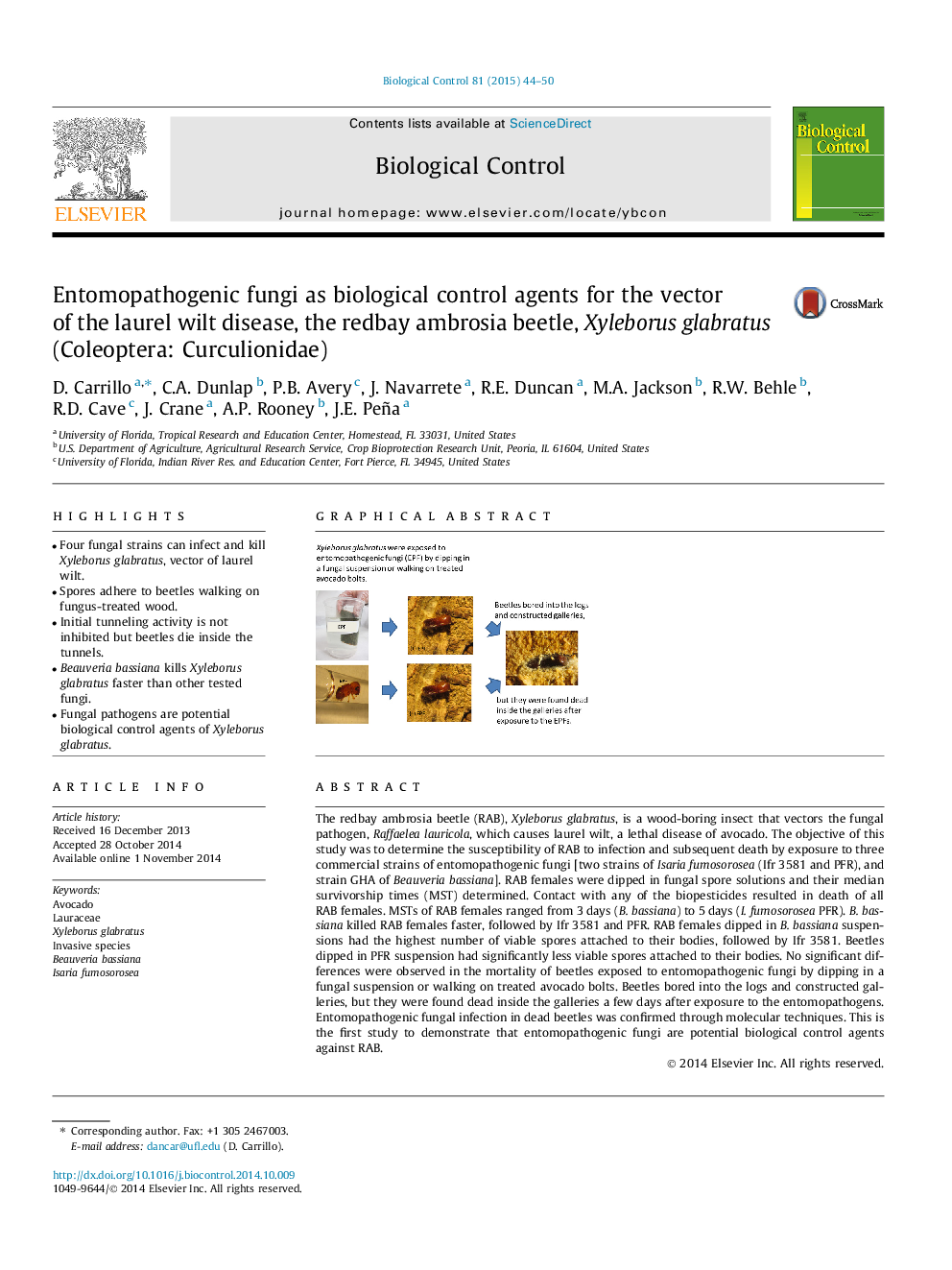| کد مقاله | کد نشریه | سال انتشار | مقاله انگلیسی | نسخه تمام متن |
|---|---|---|---|---|
| 6372603 | 1624253 | 2015 | 7 صفحه PDF | دانلود رایگان |

- Four fungal strains can infect and kill Xyleborus glabratus, vector of laurel wilt.
- Spores adhere to beetles walking on fungus-treated wood.
- Initial tunneling activity is not inhibited but beetles die inside the tunnels.
- Beauveria bassiana kills Xyleborus glabratus faster than other tested fungi.
- Fungal pathogens are potential biological control agents of Xyleborus glabratus.
The redbay ambrosia beetle (RAB), Xyleborus glabratus, is a wood-boring insect that vectors the fungal pathogen, Raffaelea lauricola, which causes laurel wilt, a lethal disease of avocado. The objective of this study was to determine the susceptibility of RAB to infection and subsequent death by exposure to three commercial strains of entomopathogenic fungi [two strains of Isaria fumosorosea (Ifr 3581 and PFR), and strain GHA of Beauveria bassiana]. RAB females were dipped in fungal spore solutions and their median survivorship times (MST) determined. Contact with any of the biopesticides resulted in death of all RAB females. MSTs of RAB females ranged from 3Â days (B. bassiana) to 5Â days (I. fumosorosea PFR). B. bassiana killed RAB females faster, followed by Ifr 3581 and PFR. RAB females dipped in B. bassiana suspensions had the highest number of viable spores attached to their bodies, followed by Ifr 3581. Beetles dipped in PFR suspension had significantly less viable spores attached to their bodies. No significant differences were observed in the mortality of beetles exposed to entomopathogenic fungi by dipping in a fungal suspension or walking on treated avocado bolts. Beetles bored into the logs and constructed galleries, but they were found dead inside the galleries a few days after exposure to the entomopathogens. Entomopathogenic fungal infection in dead beetles was confirmed through molecular techniques. This is the first study to demonstrate that entomopathogenic fungi are potential biological control agents against RAB.
Journal: Biological Control - Volume 81, February 2015, Pages 44-50